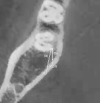Mandibular retromolar space in adults with different sagittal skeletal patterns: Cone-beam computed tomography analysis
- PMID: 35849081
- PMCID: PMC9374353
- DOI: 10.2319/112021-854.1
Mandibular retromolar space in adults with different sagittal skeletal patterns: Cone-beam computed tomography analysis
Abstract
Objectives: To analyze the mandibular retromolar space among normal-divergent adult patients with different sagittal skeletal patterns by cone-beam computed tomography (CBCT).
Materials and methods: CBCTs of a total of 120 normal-divergent adult patients were investigated. Patients were categorized into the following three groups according to their ANB angle: skeletal Class I (48 patients), skeletal Class II (36 patients), and skeletal Class III (36 patients). Four different planes parallel to the mandibular occlusal plane were used to measure the retromolar space. The retromolar space was measured by two reference lines and then compared between different sagittal skeletal patterns groups. The incidence of root contact with the inner lingual cortex was compared among the three groups.
Results: The retromolar space of the Class III patients was significantly larger than that of Class I patients and Class II patients. Compared with Class I and Class III patients, Class II patients had a smaller retromolar space and higher incidence of contact with the inner cortex of the mandible.
Conclusions: Class III patients had a larger retromolar space than Class I patients and Class II patients in four different planes. The mandibular retromolar space should be evaluated by CBCT in patients who need mandibular molar distalization.
Keywords: CBCT; Molar distalization; Retromolar space; Sagittal skeletal pattern.
© 2022 by The EH Angle Education and Research Foundation, Inc.
Conflict of interest statement
The authors declare no competing or financial interests.
Figures



Similar articles
-
Quantitative evaluation of retromolar space in adults with different vertical facial types.Angle Orthod. 2020 Nov 1;90(6):857-865. doi: 10.2319/121219-787.1. Angle Orthod. 2020. PMID: 33378518 Free PMC article.
-
Assessment of mandibular retromolar space in adults with regard to third molar eruption status.Clin Oral Investig. 2023 Feb;27(2):671-680. doi: 10.1007/s00784-022-04782-6. Epub 2022 Nov 14. Clin Oral Investig. 2023. PMID: 36374353
-
Comparison of the mandibular retromolar space in adults with different sagittal skeletal types and eruption patterns of the mandibular third-molar: a cone-beam computed tomography study.BMC Oral Health. 2024 Sep 19;24(1):1112. doi: 10.1186/s12903-024-04815-4. BMC Oral Health. 2024. PMID: 39300426 Free PMC article.
-
Evaluation of bone area in the posterior region for mandibular molar distalization in class I and class III patients.Clin Oral Investig. 2023 May;27(5):2041-2048. doi: 10.1007/s00784-023-04965-9. Epub 2023 Mar 25. Clin Oral Investig. 2023. PMID: 36964793
-
Bone availability for mandibular molar distalization in adults with mandibular prognathism.Angle Orthod. 2018 Jan;88(1):52-57. doi: 10.2319/040617-237.1. Epub 2017 Sep 26. Angle Orthod. 2018. PMID: 28949768 Free PMC article.
Cited by
-
Three-dimensional finite element study of mandibular first molar distalization with clear aligner.Hua Xi Kou Qiang Yi Xue Za Zhi. 2023 Aug 1;41(4):405-413. doi: 10.7518/hxkq.2023.2023021. Hua Xi Kou Qiang Yi Xue Za Zhi. 2023. PMID: 37474472 Free PMC article. Chinese, English.
-
Long-term stability of maxillary molar distalization in the treatment of Angle Class II malocclusion: A systematic review and meta-analysis.Clin Oral Investig. 2025 Apr 29;29(5):277. doi: 10.1007/s00784-025-06339-9. Clin Oral Investig. 2025. PMID: 40299186
References
-
- Jing Y, Han X, Guo Y, Li J, Bai D. Nonsurgical correction of a Class III malocclusion in an adult by miniscrew-assisted mandibular dentition distalization. Am J Orthod Dentofacial Orthop . 2013;143(6):877–887. - PubMed
-
- Nakamura M, Kawanabe N, Kataoka T, Murakami T, Yamashiro T, Kamioka H. Comparative evaluation of treatment outcomes between temporary anchorage devices and Class III elastics in Class III malocclusions. Am J Orthod Dentofacial Orthop . 2017;151(6):1116–1124. - PubMed
-
- Lione R, Franchi L, Laganà G, Cozza P. Effects of cervical headgear and pendulum appliance on vertical dimension in growing subjects: a retrospective controlled clinical trial. Eur J Orthod . 2015;37(3):338–344. - PubMed
-
- Kaya B, Arman A, Uçkan S, Yazici AC. Comparison of the zygoma anchorage system with cervical headgear in buccal segment distalization. Eur J Orthod . 2009;31(4):417–424. - PubMed
-
- Antonarakis GS, Kiliaridis S. Maxillary molar distalization with noncompliance intramaxillary appliances in Class II malocclusion. A systematic review. Angle Orthod . 2008;78(6):1133–1140. - PubMed
Grants and funding
LinkOut - more resources
Full Text Sources

